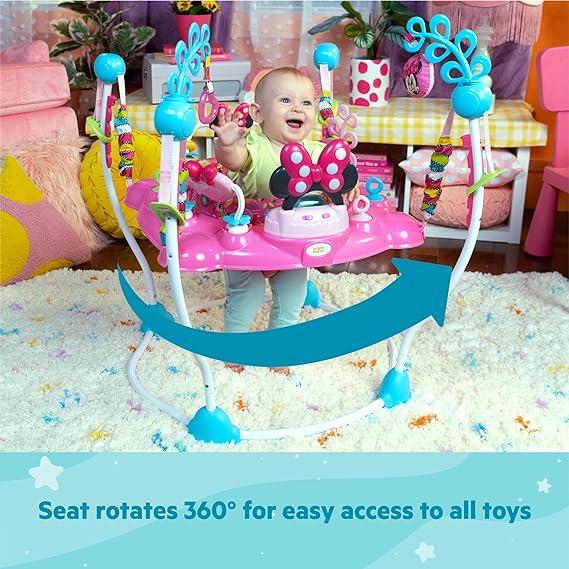
Let’s break down some common myths:
Baby walkers have been a topic of discussion among parents for decades. False beliefs and myths frequently surround it. Making judgments based on factual information is essential for using these devices for your young child.

Myth 1: Baby walkers help babies learn to walk faster.
Reality: Baby walkers don’t necessarily speed up the process of learning to walk. While they provide mobility, the natural developmental stages of crawling, standing, and walking should not be skipped. Walkers can accomplish these important milestones. But they can’t replace them.
Myth 2: Walkers are completely safe for children.
Reality: Although baby walkers are designed with safety in mind, accidents can still happen. Falling down stairs, tipping over, or hitting furniture are potential hazards. Appropriate monitoring and safety guidelines must be followed to minimize these risks.
Myth 3: Baby walkers hinder the development of leg muscles.
Reality: Critics say that baby walkers can hinder the development of leg muscles, but studies show that moderate use does not have a long-lasting effect. However, excessive use or prolonged periods in the walker can lead to a delay in reaching certain motor skill milestones.

Myth 4: Babies can’t control their movements in walkers.
Reality: Well-designed baby walkers allow babies to control their movements to a certain extent. They learn to move forward, backwards, and sideways. This freedom helps in promoting local awareness and harmony.
Myth 5: A walker is a necessity for all children.
Reality: Baby walkers are not a universal requirement. Some children may not enjoy using them. While other beginners may prefer alternative modes of movement, it is important to recognize and respect your child’s preferences and pace of development.
Myth 6: Baby walkers guarantee early independence:
Reality: While baby walkers promote a sense of independence, they should be seen as a tool among many. Encouraging freedom includes a variety of activities. These include supervised play, tummy time, and interaction with the environment.
Myth 7: Walkers are suitable for any level.
Reality: Baby walkers are designed for flat, even surfaces. Using them on uneven or slippery floors can lead to accidents. Always ensure that the environment is safe and suitable for the walker’s use.

Myth 8: Walker’s use means less parental supervision is needed.
Reality: Walkers do not replace the need for parental supervision. Accidents can happen very quickly. It is important to keep a close eye on your child, especially when they are being used.
Myth 9: Baby walkers are harmful to the development of the spine.
Reality: Baby walkers used correctly do not harm the development of the spine. However, prolonged use or incorrect positioning can lead to problems. Make sure your child’s spine is well supported. And use the walker in moderation.
Myth 10: Children who use walkers experience delays in cognitive development.
By dispelling these common myths, parents can make informed decisions about whether to introduce a baby walker into their child’s developmental journey. Always prioritize safety, follow directions, and consider your child’s individual needs and preferences.
Frequently Asked Questions (FAQs)
Baby walkers help children learn to walk faster.
Myth: Baby walkers speed up the development of walking.
Fact: Pedestrians provide mobility but do not accelerate walking. Natural milestones should be included.
Baby walkers are completely safe for children?
Myth: Pedestrians are completely safe.
Fact: Despite safety designs, accidents such as falling or tipping over can occur. Proper monitoring is very important.
Do baby walkers hinder the development of leg muscles?
Myth: Walkers hinder the development of leg muscles.
Fact: Moderate use does not affect development, but excessive use can delay motor skills.
Can children control their movements in a walker?
Myth: Children can’t control the movement of the walker.
Fact: Well-designed walkers allow for control and Promote local awareness and mobility skills.
Baby walkers are essential for all children?
Myth: Walkers are essential for everyone.
Reality: They are optional on a global scale. Children’s preferences and alternative movements should be respected.
Conclusion
Dispelling myths about baby walkers is important for parents’ informed decisions. While they offer mobility and freedom, Safety, moderation, and consideration of individual needs are paramount. Pedestrians should be seen as tools in a child’s developmental journey, Not as necessities.
